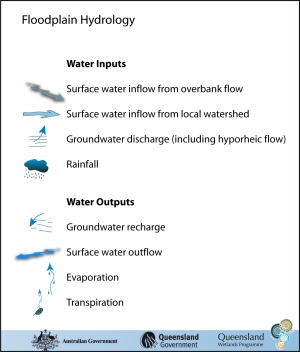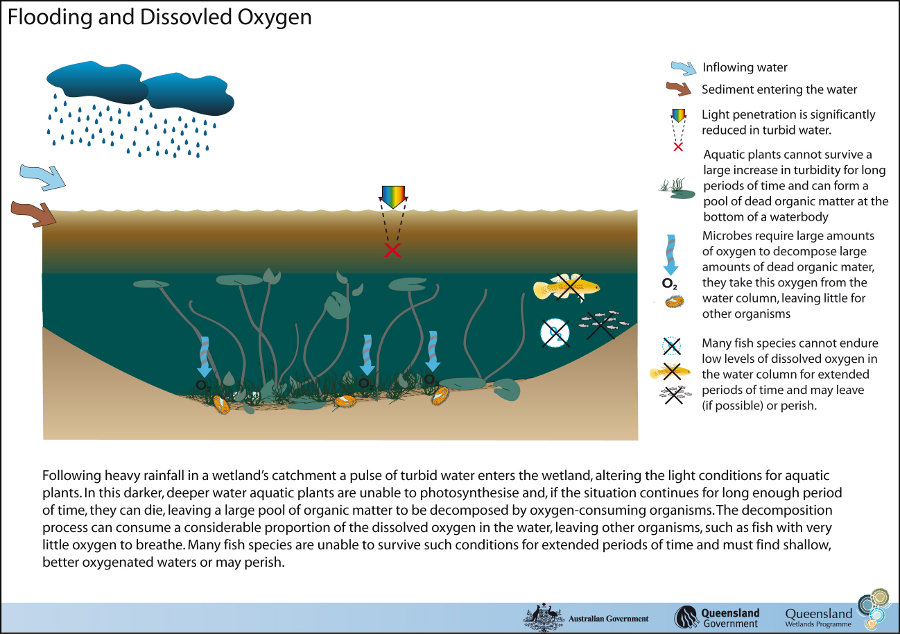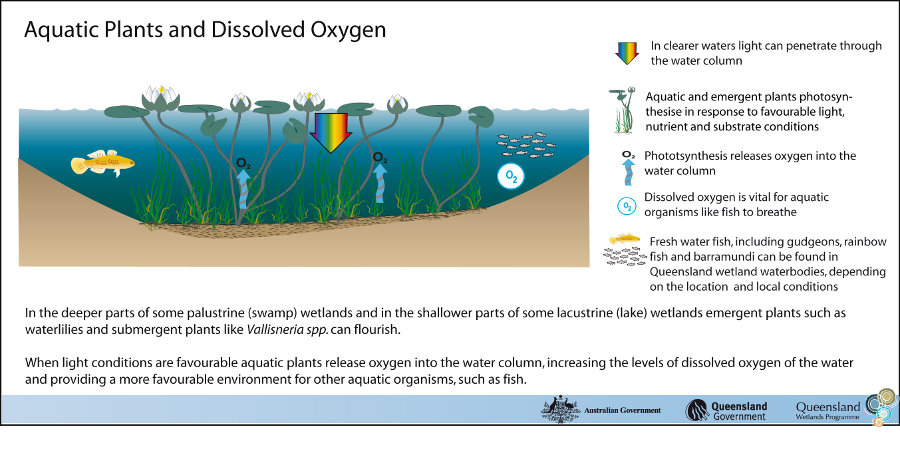|
|
Coastal and subcoastal non-floodplain grass sedge and herb swampCoastal and subcoastal non-floodplain grass sedge and herb swamp – HydrologyClick on elements of the model or select from the tabs below
Non-floodplain swamp habitat hydrology is related to a site’s topography, substrate type and position within the catchment. Climatic factors (especially those related to rainfall) also play a significant role in the regularity, seasonality, duration and amount of water entering and leaving the wetland. Water InputsNon-floodplain wetlands can be flushed with rain, run-off from the local watershed and groundwater discharge, or a combination of these sources. If groundwater table levels and substrate permeability permit, this can lead to more constant systems. This wetland habitat type can play a role in groundwater recharge/discharge. An important point to note is that groundwater flow tends to be clear (not turbid), compared to surface water flow. Water OutputsEvaporation, transpiration and groundwater recharge can lead these systems to dry out, often completely. Water may also flow out to the ocean via distributary channels, depending on topography.
Last updated: 22 March 2013 This page should be cited as: Department of Environment, Science and Innovation, Queensland (2013) Coastal and subcoastal non-floodplain grass sedge and herb swamp – Hydrology, WetlandInfo website, accessed 8 May 2025. Available at: https://wetlandinfo.des.qld.gov.au/wetlands/ecology/aquatic-ecosystems-natural/palustrine/non-floodplain-grass-sedge-herb-swamp/hydrology.html |

 — Department of the Environment, Tourism, Science and Innovation
— Department of the Environment, Tourism, Science and Innovation







